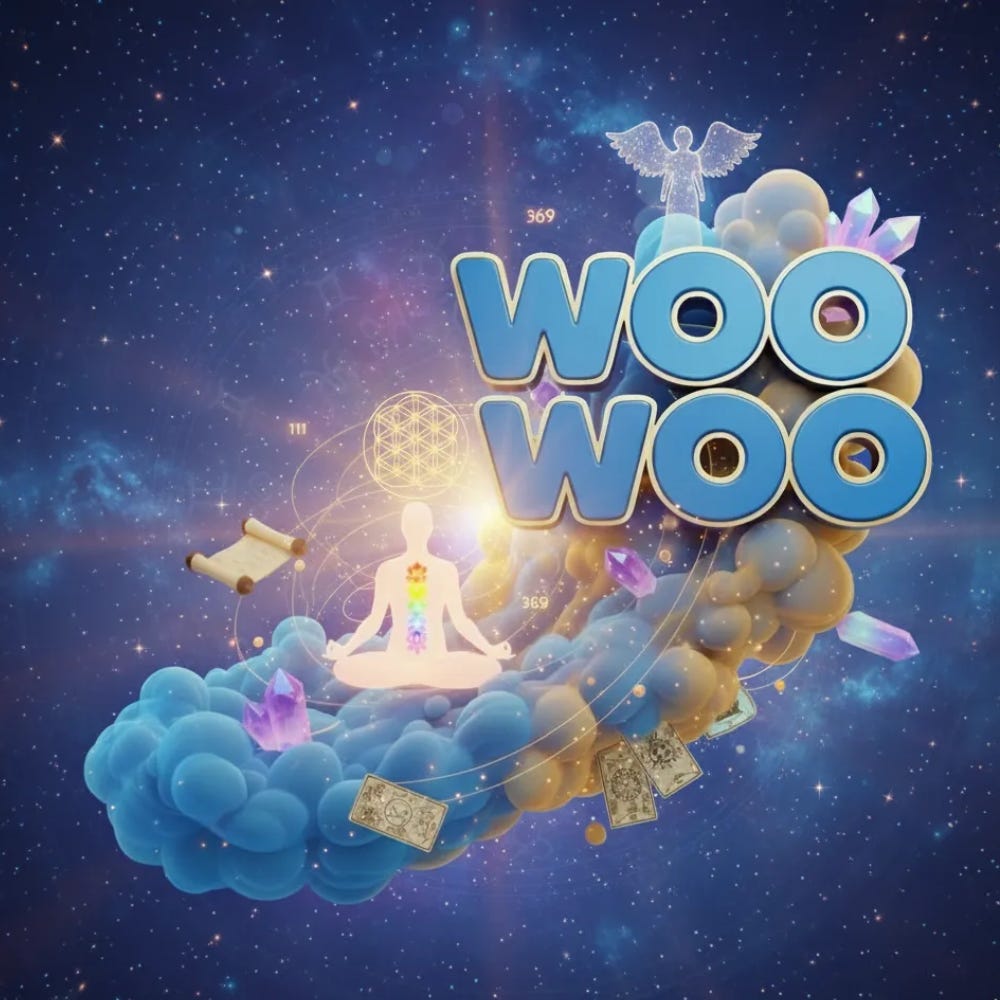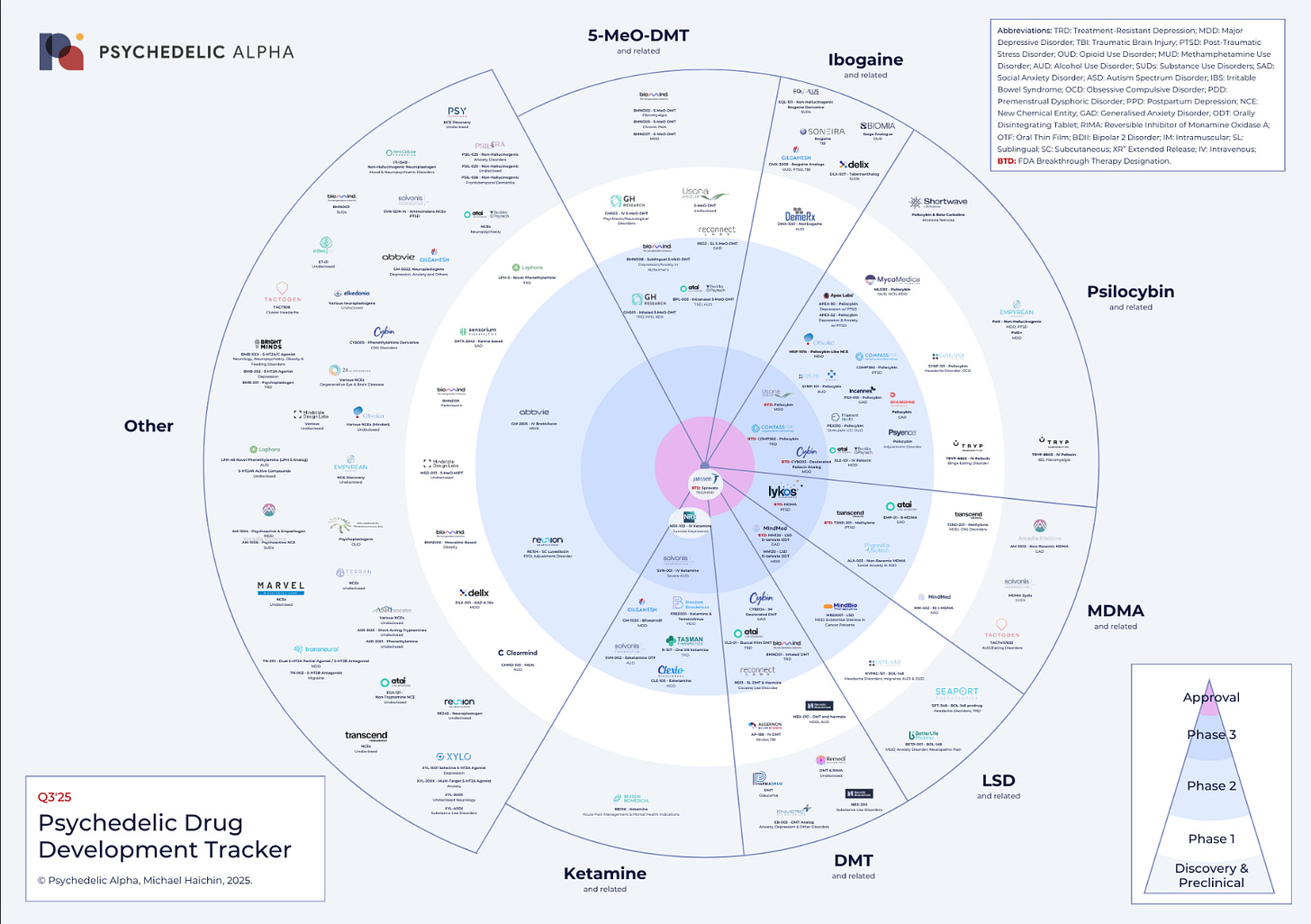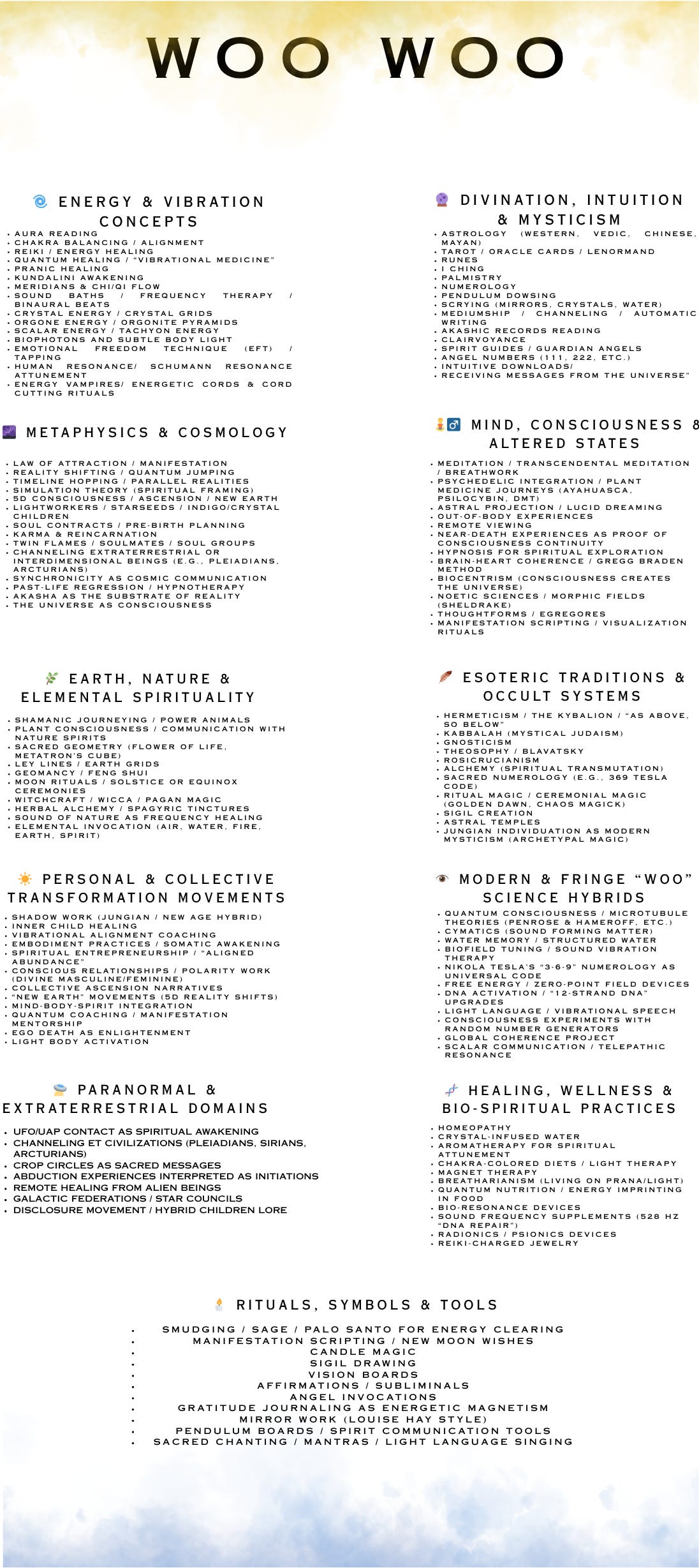Woo Woo
Warning & Reverence
woo-woo: dubiously or outlandishly mystical, supernatural, or unscientific.
My interest in woo woo1 ideas has only grown, paired with a desire to explore them through writing—not least because they sit at the frontier of human understanding. As with most ideas on the frontier, promise beckons while danger lurks. Today, I create an artifact for my future self, meant to serve as a warning and reverence for woo woo ideas.
Woo woo is one of those labels.
You know, like conspiracy theory, pseudoscience, misinformation, and disinformation. The kind of label that prompts the thought, “Ahh, got it. Brain rot nonsense. Ignore.”
These labels remove room for nuance. I previously discussed their uses, impact, and harms. Those labels douse the idea in toxic waste, causing anyone who touches it to be perceived as crazy. And I get it. Sometimes, it’s necessary to outsource research to someone we trust. A trusted source placing a label on certain subject matter allows us to set it aside as irrelevant, reducing the load of anomalous ideas that we personally need to investigate.
We only have so much cognitive capacity in a day. People’s kids, jobs, and survival are more important than investigating some crazy ideas. When you hear a claim that an alien mothership is coming to Earth, it piques interest, even destabilizing the instinct for survival that we fight so hard to maintain. Using a label, we can quickly do away with this info and get back to the day—one of the reasons they’re so effective.
The major problem is that profound truths might be trapped behind the label. It’s clear at this point that many woo woo ideas are far more than nonsense, and these ideas have moved beyond the fringe and into mainstream culture. In Trish Blain’s Kainos guest post, “Life is Woo,” she makes this clear:
As nervous as we may still feel about waving our “woo woo” flag, the truth is, woo isn’t fringe anymore.
Psychedelics are being integrated into western medicine. Meditation, yoga, mindfulness, breathwork, and energy healing are staples of corporate wellness. Tantra and kundalini practices are commonplace in many bedrooms. Flow states, peak experiences, and spiritual awakenings are being studied in labs and practiced in boardrooms.
Pop culture is exploding with the paranormal. In 2025, The Telepathy Tapes podcast hit #1 on Spotify in both the U.S. and U.K., surpassing 15 million downloads in just months. What was once mocked as fringe is now prime-time obsession. Spotify’s top podcast, The Joe Rogan Experience, has hosted countless conversations on psychedelics, remote viewing, and expanded consciousness, introducing millions to these ideas.
What once made you crazy now makes you interesting.
I remember listening to psychedelic trip reports on my daily commute back home from college, thinking about how mind-blowing and interesting the drugs were, and how crazy it was that society had relegated something potentially curative to fringe obscurity.
Fast-forward eight years to this past weekend.
My wife and I were sitting in a nice workspace waiting for our car to be serviced. She showed me this chart of the FDA approval status of incoming psychedelic medicine, categorized by psychoactive substance. I mean, look at this.
Psychedelics are not only emerging, but in years’ time we’ll have such a broad range of psychedelics as prescription drugs that it’ll start to seem like a normal part of medicine.
And this goes beyond psychedelics, as Trish’s post so excitingly states. It brings me to what must not be forgotten.
Reminder for Future-Dom:
Ideas that were once labeled woo woo, like psychedelics, have an evident (and now measured) positive effect on people’s lives. Things can be unscientific and still point to truth. Nonphysical phenomena that seem unbelievable are just as real as physical matter. They are “mystical,” because they carry a weight of magic to them, which, at the very least, is interesting. Especially if the idea/practice is useful, the label of woo woo (and the other labels) should especially be set aside and investigated. In fact, the second someone casts the woo-label, you should be skeptical about why they placed the label on that idea in the first place and what their intentions are. Is it truly crazy, or is it not understandable with a scientific mindset? Remember: investigation into these ideas can benefit you, your family, friends, and your audience; don’t let something profound slip by because the uninformed cast a label onto it.
That said, there’s something about the woo woo that isn’t well situated.
The fact that there exists a spiritual realm—the place of nonphysical phenomena—that is just as real as the material world is not a new argument. This is something humans have believed for thousands of years. These days, there’s no cohesive, agreed-upon taxonomy of language, source texts, or modalities of practice in spiritual contexts2.
Here is where my warning lies.
Warning for Future-Dom:
The lack of agreement means that there are, and will be, many different attempts at a working theory of what it all means. Remember that in pursuit of novelty, anchoring to tradition is a safe way forward. It doesn’t mean you should ignore new information; it just means you should analyze critically. Don’t fall into the two dangerous traps:
1. Rigid adherence to tradition
2. Jumping on the hype train of the newest spiritual craze (here be dragons).
Don’t fall for the influencers who put a sense of urgency3 behind woo woo phenomena. In the world of woo woo, any purveyor of urgency should be reviewed with extreme caution (given potential incentives, like attention-hijacking, at play). As the proverb goes, “The devil takes a hand in what is done in haste.” Consult logic, emotion, and intuition to navigate decisions.
If credible sources make outlandish claims to the public (i.e., aliens are coming at the end of the year, Antichrist is here and it’s xyz, AI is provably God) make note of it, explore it, discuss it rigorously. Give time to these ideas. A claim of extraordinary magnitude must be investigated thoroughly before it gets the tag of Truth. Be ready to be proven wrong in both directions.
Above all, remember that darkness dies in the face of discussion, not suppression. Fraud and malevolence might prowl in the woo woo, but that doesn’t mean the ideas should be ignored. It just means that an ethic—in service of the ultimate good—must be applied to the approach. This is the integration of the Jungian shadow with a surrounding ethic to battle evil, rather than give in to it.
In terms of woo woo, I will do my part to explore the ideas in full, circumambulate the possibilities, and write an account of what I think, all while reminding myself and others that they should be treated with care.
Approaching these ideas with sincere humility is how we will get to truth, which means seeing past the label yet not becoming consumed or destroyed by it.
I’ll continue to give it my best.
Take care of yourselves, everyone.
Dom
Woo woo ideas are always evolving, and therefore there’s not an exhaustive list. What makes the woo woo list today might be mainstream tomorrow. That said, I had AI help me craft a long list of woo woo ideas. I sifted through it, but I will say, I’m not versed in most of these ideas. I erred on overinclusion. I know that there are some items that are far more mainstream than others, and therefore placing them on a list together can seem like they invalidate those items. While surely frustrating, it also alludes to the point of this piece. I hope that we can see past the label and give each their due.
I know that there may never be an agreement in this area. Even at the most religious point in human history, there were still coexisting religious frameworks with different stories, language, and practices. These religious and spiritual traditions seem to point to the same thing, so though there are not agreements in the surface definitions and signs, they typically point to similar underlying symbols. Study of this can be found in cross-cultural religious studies, and studies of mythology and fairy tales. This is an effort that was done by Carl Jung himself, and many of his notable students, particularly Marie-Louise von Franz. These dynamic figures and symbols are otherwise known as archetypes. This is all to say that while we may not have an agreed-upon language, pinnacle of truth, source text, or modality of practice, the underlying substrate seems to come from the same thing. Now, this is a frontier idea, and it may very well be that religious traditions can come together to create a cohesive one. Something frequently written about (particularly Jung’s Aion) is that we’re entering a new phase which might be an era of a new religion. Some have pointed to the UFO phenomenon as a birth of a new myth, like Jung in his book, Flying Saucers: A Modern Myth of Things Seen in the Skies or Diana Walsh Pasulka for a more contemporary view. For a more in-depth discussion on this emergence of new myths, you can read my post here.
A caveat: if there is a culture-wide period of chaos, urgency might be necessary. In that case, remember to look for alignment across your logic, emotion, and intuition. Consult dreams and access the realm of the spirit in the way that you’re most in touch with at the given time of reading.





